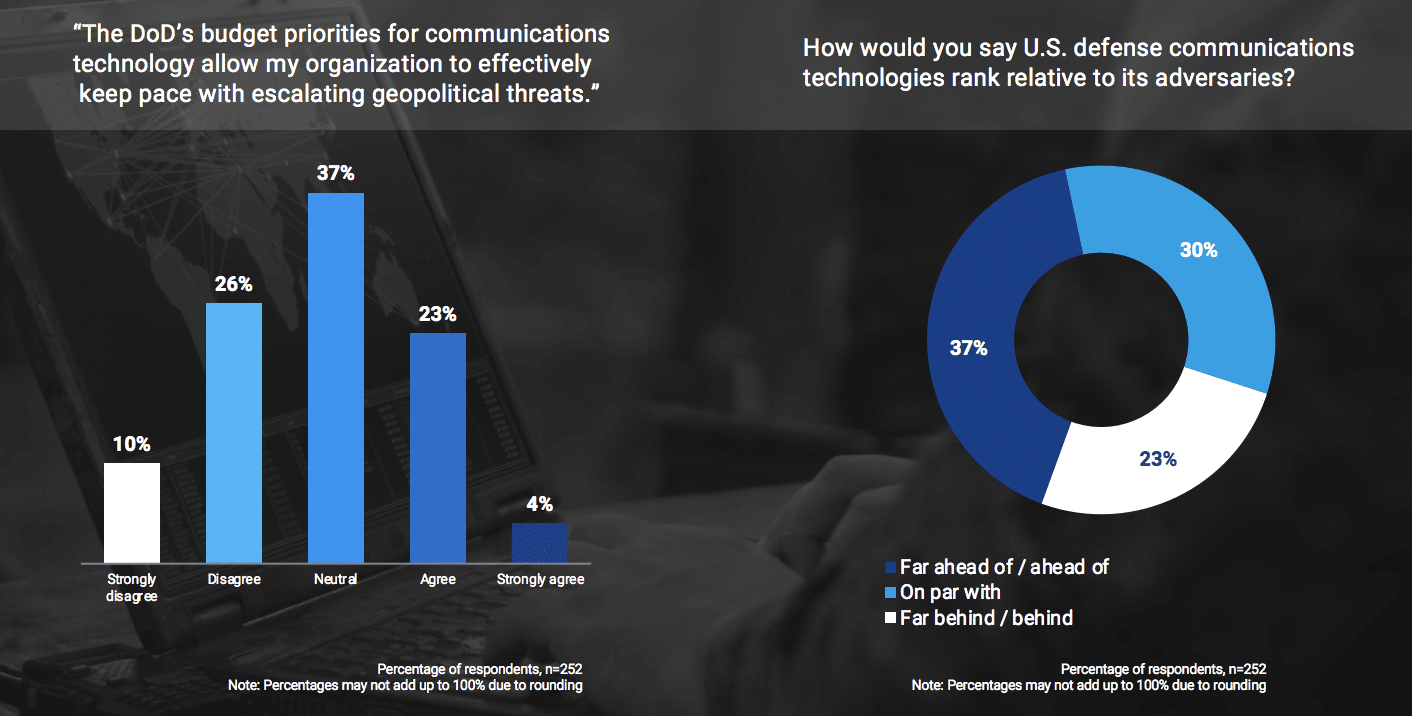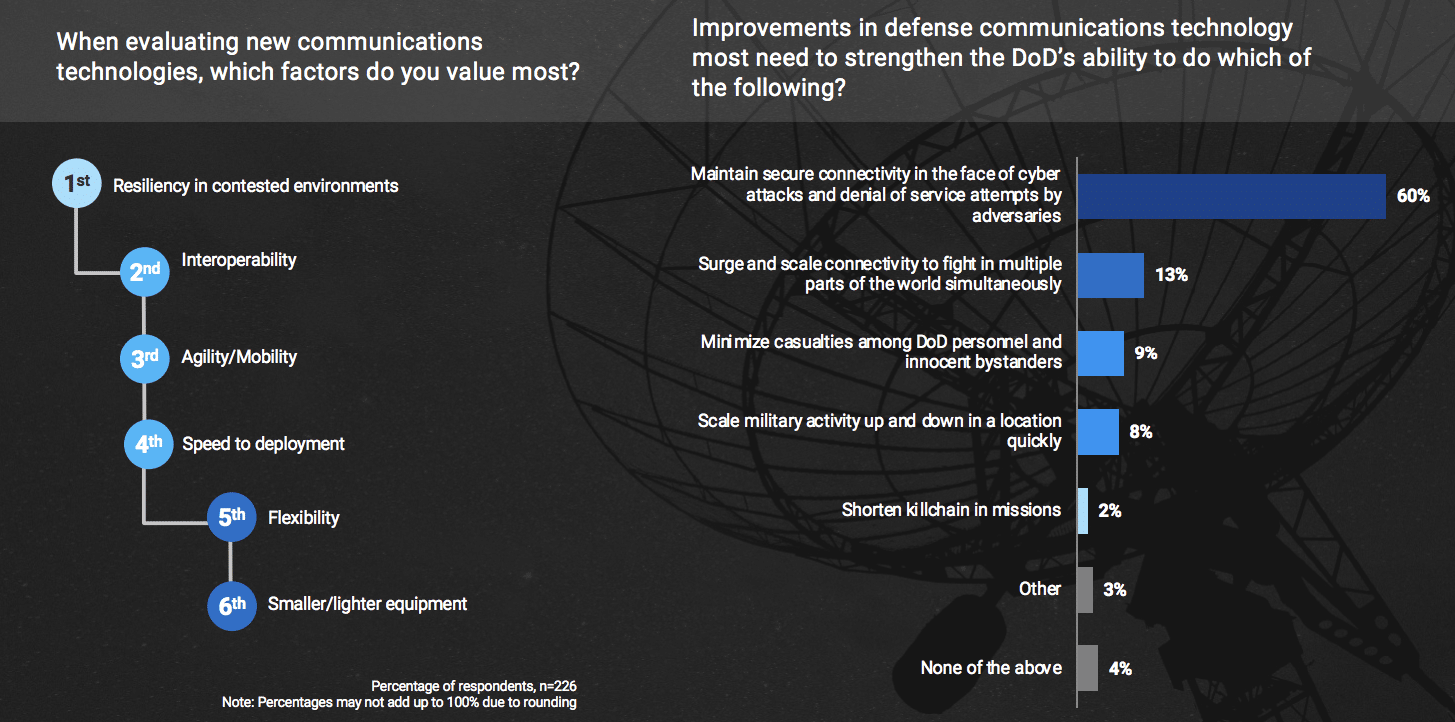In an era of constant technological advances, the country’s defense agencies are falling short of battlefield expectations when it comes to military communications technologies, according to new research from Government Business Council (GBC), the research division of Government Executive Media Group, in partnership with comms firm Viasat.
Based on a survey of over 300 U.S. active military and Department of Defense (DoD) participants across the nation, this study investigates the role of military connectivity and evaluates the practicality and effectiveness of U.S. military communications technologies.
“Our survey reveals an alarming number of defense professionals who lack basic levels of connectivity needed to accomplish their objectives,” said Daniel Thomas, director of the Government Business Council, in a news release. “Respondents are vocal that changes must be made to the acquisition front and center, to keep pace with commercial innovations and equip users with vital battlefield capabilities. This is a clarion call to military leadership across the board.”

Key findings from the study include:
Expectations of connectivity on the battlefield are high, but largely unmet
Sixty-eight percent of survey respondents say they expect the same level of connectivity and access to trusted and timely information on the battlefield as they get in the civilian world. However, less than half of respondents (46 percent) feel they have the level of connectivity needed to successfully execute their mission objectives. And a whopping 98 percent of respondents say they are disrupted to a point where they are left with a complete loss of connectivity on the battlefield.
At risk of falling behind new threats
Only 27 percent of respondents believe the DoD’s budget priorities for communications technology allow the U.S. to effectively keep pace with escalating geopolitical threats.
Organizations are facing significant barriers to network modernization efforts
Respondents noted that the three biggest challenges facing their organizations’ network modernization efforts are an inability to keep pace with commercial technology, procurement inefficiencies and limited funding. Seventy percent of respondents feel that adopting new acquisition processes would allow their organization to update technologies at the speed of relevance.
Emerging cloud-based systems, artificial intelligence and machine learning capabilities will be critical to future mission success
Over 60 percent of respondents agree cloud-enabled technologies will play an increasingly significant role in enhancing and accelerating the U.S. military’s decision-making capabilities. In addition, 81 percent agree it’s critical for U.S. military forces to have access to a modernized end-to-end satellite and terrestrial networks to make cloud-enabled technologies and the Internet of Battlefield Things a reality across the battlespace.

From a partner perspective, Viasat believes senior leaders in the DoD are beginning to recognize this acquisition problem. These leaders are turning their focus toward transforming the status quo by adapting the DoD acquisition process and culture to address this issue and enhance technological capabilities across the battlespace. However, the study findings illustrate much more needs to be done to ensure that battlefield communications technology is up to the challenge of assuring resilient, secure connectivity in the most demanding, high pressure situations and to provide the capabilities needed to deter complex, escalating, multi-dimensional threats from near-peer adversaries.
“The State of Military Communications survey, a first of its kind study, indicates the compelling need for enhanced communications technology to be delivered to our military forces on a much faster timeline so that warfighters have the same connectivity during their deployment as they have at home,” said Ken Peterman, president of Government Systems at Viasat, in the release. “Acquisition models must adapt to better leverage private sector technology, so that military connectivity can keep pace with accelerating private sector technology trajectories. By increasingly leveraging private sector capabilities in the vital technology sectors of satellite communications, tactical networking, cybersecurity and cloud-based systems, the DoD can maintain information dominance at the tactical edge, which is crucial to mission success across the current and future technology driven battlespace.”




